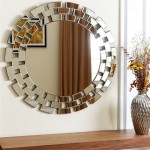How to Screen Mirror to Multiple TVs
Screen mirroring, the ability to wirelessly display the content of a device's screen on a larger display like a television, has become increasingly popular. Extending this functionality to multiple TVs simultaneously opens up possibilities for presentations, entertainment, and information dissemination in various settings. This article explores several methods for achieving multi-TV screen mirroring.
Using a Hardware Splitter
Hardware splitters offer a reliable and straightforward solution for mirroring to multiple TVs. These devices take a single HDMI input and duplicate the signal to multiple HDMI outputs. Users connect the source device (e.g., laptop, streaming stick) to the splitter's input, and then connect each TV to one of the splitter's outputs using HDMI cables. This method is ideal for static displays where consistent, simultaneous mirroring is required. The quality of the mirrored display depends on the splitter's capabilities and the HDMI cable quality.
It's important to note that hardware splitters typically mirror the exact same content to all connected TVs. Controlling which content appears on which screen requires more complex setups, as discussed below.
When selecting a splitter, consider the number of output ports required and the resolution supported. Ensure compatibility with the source device's output resolution and the TVs' input resolution. Some splitters may also offer features like signal amplification for longer cable runs.
Employing a Wireless Presentation System
Wireless presentation systems offer a more flexible, albeit potentially more complex, approach to multi-TV screen mirroring. These systems often involve a central hub or receiver connected to each TV and software or an app running on the source device. They typically leverage Wi-Fi or a dedicated wireless network for transmission. The advantage of this method is the ability to manage content displayed on each screen individually, rather than simply mirroring the same content everywhere. This allows displaying different content on different screens or creating video walls for a more immersive experience.
Wireless presentation systems can vary significantly in features and capabilities. Some systems allow multiple users to connect and share their screens simultaneously, while others offer interactive features like annotation and whiteboarding. The setup process usually involves connecting the receivers to the TVs and installing the necessary software or app on the presenting devices. Ensuring network compatibility and bandwidth adequacy is crucial for smooth and lag-free performance.
Choosing the right wireless presentation system depends on specific needs and budget. Factors to consider include the number of TVs supported, the level of control over individual displays, the range of the wireless signal, and the security features offered.
Leveraging Software Solutions for Multi-Casting
Software solutions can also facilitate screen mirroring to multiple TVs, particularly for presentations and streaming scenarios. Some software applications allow users to select multiple display outputs connected to the source device and configure how content is displayed on each screen. This can range from simple mirroring to extending the desktop across multiple displays, allowing different windows or applications to be shown on different TVs.
The effectiveness of this method depends on the capabilities of the operating system and the graphics card of the source device. Some operating systems offer built-in features for managing multiple displays, while others may require third-party software. For demanding applications like high-resolution video streaming, a powerful graphics card may be necessary to ensure smooth performance across all connected TVs.
When using software solutions, it is essential to configure the display settings correctly to achieve the desired output on each TV. This typically involves selecting the appropriate resolution, orientation, and display mode for each connected display. Testing the setup thoroughly before a presentation or event is crucial to avoid technical difficulties.
Utilizing a Combination of Methods
In some situations, a combination of the methods described above might be the most effective solution. For example, a user might use a hardware splitter to mirror the primary content to two TVs while utilizing a wireless presentation system to display supplementary information on a third TV. This allows for a flexible and dynamic display setup tailored to the specific requirements of the environment.
Implementing a hybrid approach requires careful planning and configuration to ensure compatibility between the different components. Testing the entire setup beforehand is critical to avoid any unforeseen issues during operation.

How To Wirelessly Screen Mirror A Windows Pc Multiple Apple Tvs

How To Wirelessly Screen Mirror An Ipad Multiple Apple Tvs

How To Wirelessly Screen Mirror A Mac Multiple Apple Tvs

How To Screen Mirror An Android Phone Or Tablet Multiple Apple Tvs

How To Screen Mirror Multiple Devices Apple Tv Simultaneously

How To Wirelessly Screen Mirror An Iphone Multiple Apple Tvs

1001 Tvs How To Mirror Multiple Phones The Same Computer

1001 Tvs How To Mirror Multiple Phones The Same Computer
New App Brings First Multi Device Screen Mirroring Tech To Apple Tv

Mirror Screen To Any Smart Tv On The Mac App








